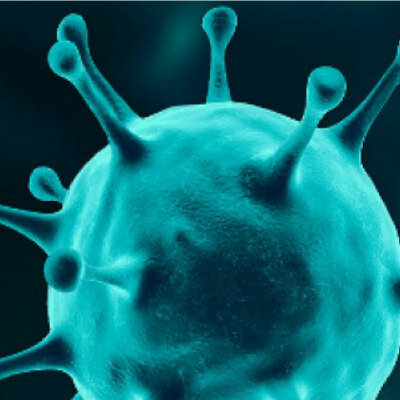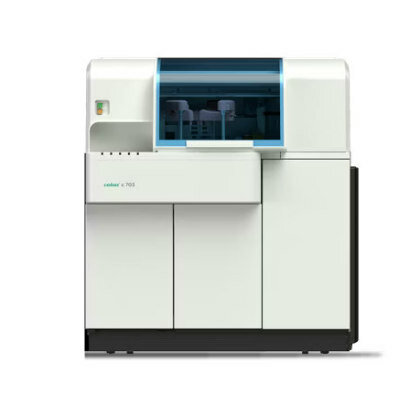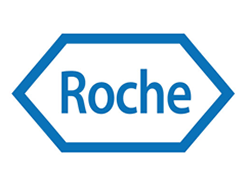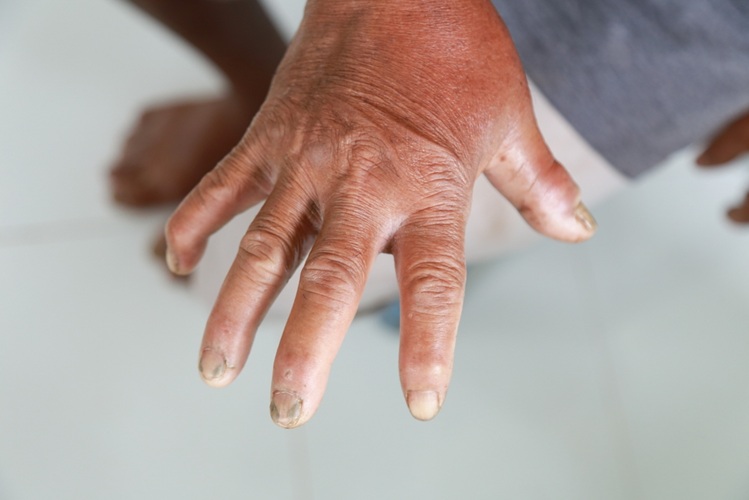Infant HIV Near Point-of-Care Test Field Evaluated
|
By LabMedica International staff writers Posted on 30 Jan 2019 |
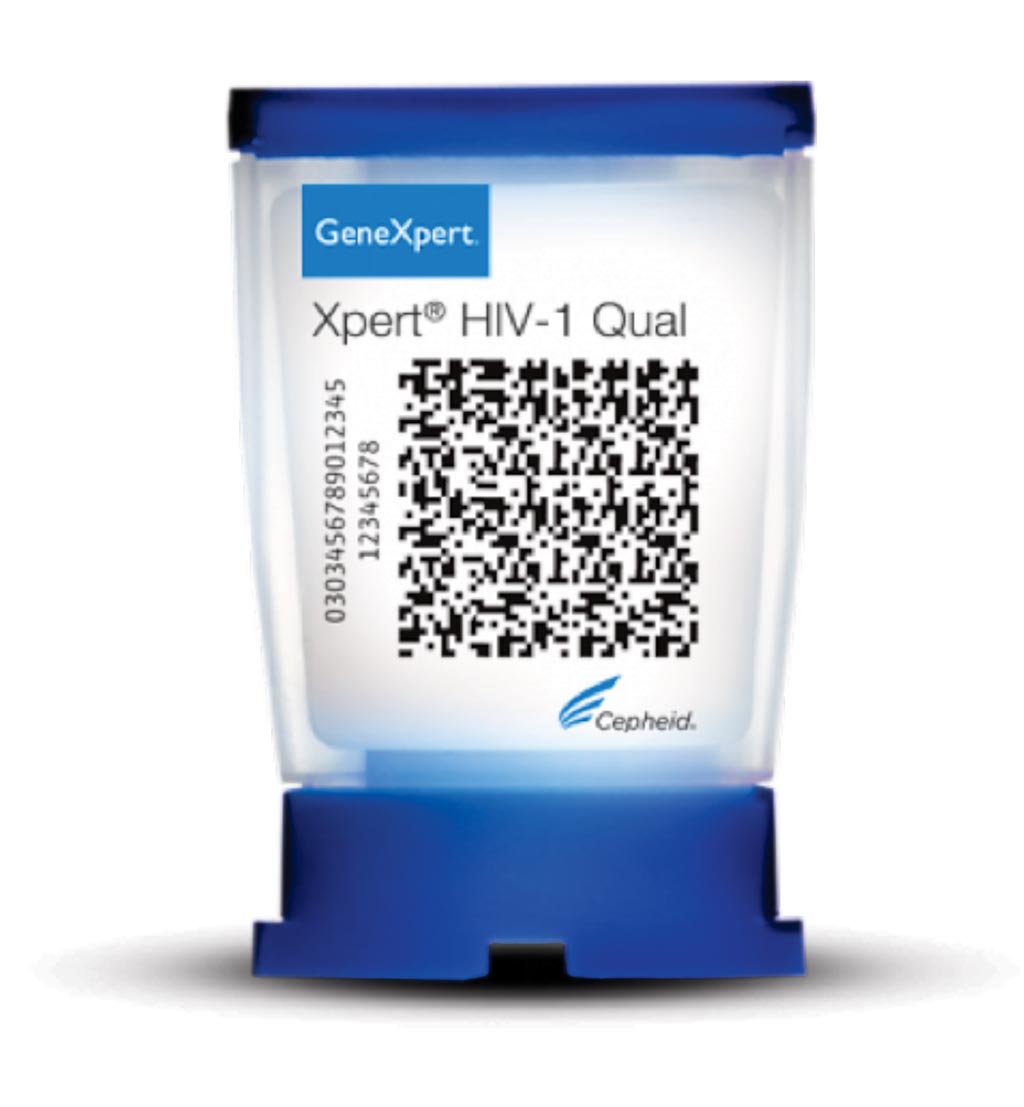
Image: The GeneXpert HIV-1 Qual is a highly sensitive HIV qualitative test is needed for detecting HIV infection in pediatric patients 18 months of age or younger (Photo courtesy of Cepheid).
Perinatal human immunodeficiency virus (HIV) infection contributes to an increase in morbidity and mortality among children in their first years of life, and lack of antiretroviral treatment (ART) and late ART initiation has seen more than half of the infants infected with HIV die before their second birthday.
The first step in the provision of early infant diagnosis (EID) services and linkage to care among HIV exposed infants is early identification; however this still remains a challenge in sub-Saharan Africa (SSA). Access to HIV diagnosis for HIV-exposed infants and children is a challenge in SSA because of the processes involved in HIV detection that require use of nucleic acid amplification tests conducted by trained personnel in centralized laboratories usually based in urban centers.
Scientists at the Kenya Medical Research Institute (Kisumu, Kenya) and their colleagues screened and evaluated 3,814 mother-infant pairs who presented to clinics and hospitals in a town in Kenya in 2016. In the six-month timespan of the study, there were 921 infants enrolled who were known to be exposed to HIV based on the mother's HIV status. Dried blood samples (DBS) samples were collected from HIV exposed children less than18 months of age enrolled in a cross-sectional study.
The team performed Rapid HIV testing using serial tests with Determine Rapid HIV-1/2 Antibody test followed if positive by Unigold Rapid HIV test kits. The team performed a field evaluation of GeneXpert HIV-1 Qual. The GeneXpert HIV-1 Qual Assay was performed on six different GeneXpert instruments by 10 trained laboratory technologists. The test was compared with the gold standard for EID PCR, COBAS AmpliPrep/COBAS TaqMan HIV-1 Qualitative Test, v2.0 assay (CAP/CTM HIV-1) qualitative PCR.
The scientists performed a total of 969 POC tests on 921 (24.6%) children who were HIV exposed. Approximately 15% of the children were tested as newborns and 49% of them tested at routine EID visit of six weeks. Out of the 921 exposed infants identified throughout the study, 30 were found HIV positive through both the Roche CAP/CTM and near point of care (GeneXpert), leading to a mother-to-child transmission (MTCT) rate of 3.3%. A total of 969 results were correctly assayed, with a final sensitivity and specificity of 94.1% and 99.8%, respectively, with two false negative PCR found. The POC gave an error rate of 0.7%, (7/969 samples) and all were resolved after a repeat test.
The authors concluded that their study demonstrated that the GeneXpert POC EID assay has a high sensitivity and specificity and performs well in a field setting with high coverage of ART prophylaxis among mothers and children. The sensitivity and specificity of 94% and 99% respectively, does reflect the true performance of the device even though they had nine discordant results with Roche, seven were what Roche considered as “reference test” errors. The study was originally published on December 27, 2018, in the journal Public Library of Science ONE.
Related Links:
Kenya Medical Research Institute
The first step in the provision of early infant diagnosis (EID) services and linkage to care among HIV exposed infants is early identification; however this still remains a challenge in sub-Saharan Africa (SSA). Access to HIV diagnosis for HIV-exposed infants and children is a challenge in SSA because of the processes involved in HIV detection that require use of nucleic acid amplification tests conducted by trained personnel in centralized laboratories usually based in urban centers.
Scientists at the Kenya Medical Research Institute (Kisumu, Kenya) and their colleagues screened and evaluated 3,814 mother-infant pairs who presented to clinics and hospitals in a town in Kenya in 2016. In the six-month timespan of the study, there were 921 infants enrolled who were known to be exposed to HIV based on the mother's HIV status. Dried blood samples (DBS) samples were collected from HIV exposed children less than18 months of age enrolled in a cross-sectional study.
The team performed Rapid HIV testing using serial tests with Determine Rapid HIV-1/2 Antibody test followed if positive by Unigold Rapid HIV test kits. The team performed a field evaluation of GeneXpert HIV-1 Qual. The GeneXpert HIV-1 Qual Assay was performed on six different GeneXpert instruments by 10 trained laboratory technologists. The test was compared with the gold standard for EID PCR, COBAS AmpliPrep/COBAS TaqMan HIV-1 Qualitative Test, v2.0 assay (CAP/CTM HIV-1) qualitative PCR.
The scientists performed a total of 969 POC tests on 921 (24.6%) children who were HIV exposed. Approximately 15% of the children were tested as newborns and 49% of them tested at routine EID visit of six weeks. Out of the 921 exposed infants identified throughout the study, 30 were found HIV positive through both the Roche CAP/CTM and near point of care (GeneXpert), leading to a mother-to-child transmission (MTCT) rate of 3.3%. A total of 969 results were correctly assayed, with a final sensitivity and specificity of 94.1% and 99.8%, respectively, with two false negative PCR found. The POC gave an error rate of 0.7%, (7/969 samples) and all were resolved after a repeat test.
The authors concluded that their study demonstrated that the GeneXpert POC EID assay has a high sensitivity and specificity and performs well in a field setting with high coverage of ART prophylaxis among mothers and children. The sensitivity and specificity of 94% and 99% respectively, does reflect the true performance of the device even though they had nine discordant results with Roche, seven were what Roche considered as “reference test” errors. The study was originally published on December 27, 2018, in the journal Public Library of Science ONE.
Related Links:
Kenya Medical Research Institute
Latest Microbiology News
- Handheld Device Delivers Low-Cost TB Results in Less Than One Hour
- New AI-Based Method Improves Diagnosis of Drug-Resistant Infections
- Breakthrough Diagnostic Technology Identifies Bacterial Infections with Almost 100% Accuracy within Three Hours
- Innovative ID/AST System to Help Diagnose Infectious Diseases and Combat AMR
- Gastrointestinal Panel Delivers Rapid Detection of Five Common Bacterial Pathogens for Outpatient Use
- Rapid PCR Testing in ICU Improves Antibiotic Stewardship
- Unique Genetic Signature Predicts Drug Resistance in Bacteria
- Unique Barcoding System Tracks Pneumonia-Causing Bacteria as They Infect Blood Stream
- Rapid Sepsis Diagnostic Test Demonstrates Improved Patient Care and Cost Savings in Hospital Application
- Rapid Diagnostic System to Detect Neonatal Sepsis Within Hours
- Novel Test to Diagnose Bacterial Pneumonia Directly from Whole Blood
- Interferon-γ Release Assay Effective in Patients with COPD Complicated with Pulmonary Tuberculosis
- New Point of Care Tests to Help Reduce Overuse of Antibiotics
- 30-Minute Sepsis Test Differentiates Bacterial Infections, Viral Infections, and Noninfectious Disease
- CRISPR-TB Blood Test to Enable Early Disease Diagnosis and Public Screening
- Syndromic Panel Provides Fast Answers for Outpatient Diagnosis of Gastrointestinal Conditions
Channels
Clinical Chemistry
view channel
‘Brilliantly Luminous’ Nanoscale Chemical Tool to Improve Disease Detection
Thousands of commercially available glowing molecules known as fluorophores are commonly used in medical imaging, disease detection, biomarker tagging, and chemical analysis. They are also integral in... Read more
Low-Cost Portable Screening Test to Transform Kidney Disease Detection
Millions of individuals suffer from kidney disease, which often remains undiagnosed until it has reached a critical stage. This silent epidemic not only diminishes the quality of life for those affected... Read more
New Method Uses Pulsed Infrared Light to Find Cancer's 'Fingerprints' In Blood Plasma
Cancer diagnoses have traditionally relied on invasive or time-consuming procedures like tissue biopsies. Now, new research published in ACS Central Science introduces a method that utilizes pulsed infrared... Read moreMolecular Diagnostics
view channel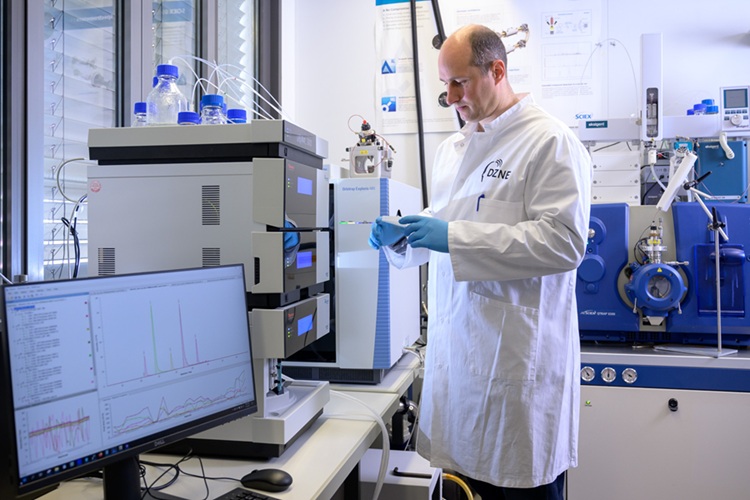
Blood Biomarker Test Could Detect Genetic Predisposition to Alzheimer’s
New medications for Alzheimer’s disease, the most common form of dementia, are now becoming available. These treatments, known as “amyloid antibodies,” work by promoting the removal of small deposits from... Read more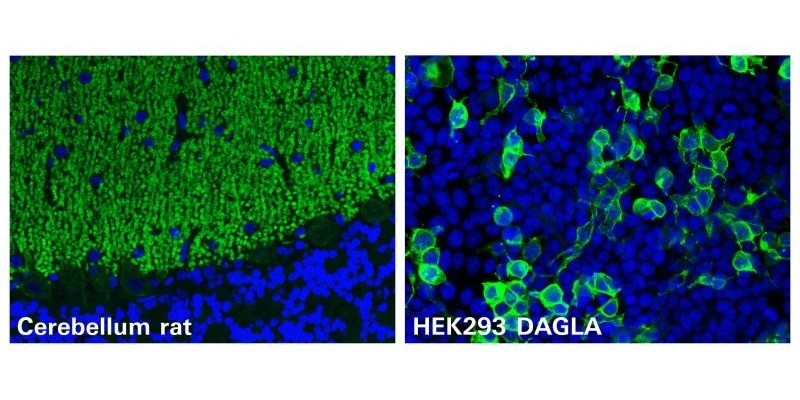
Novel Autoantibody Against DAGLA Discovered in Cerebellitis
Autoimmune cerebellar ataxias are strongly disabling disorders characterized by an impaired ability to coordinate muscle movement. Cerebellar autoantibodies serve as useful biomarkers to support rapid... Read more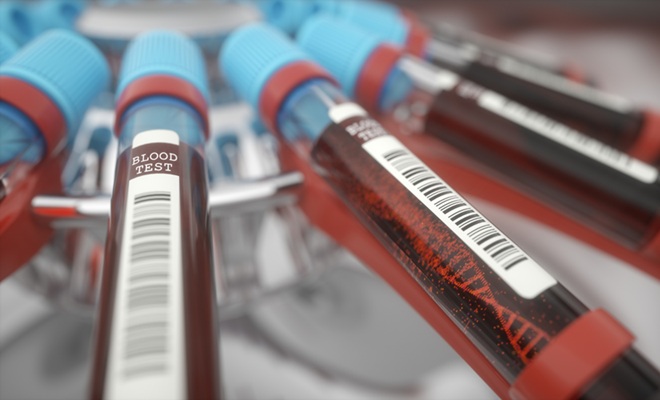
Gene-Based Blood Test Accurately Predicts Tumor Recurrence of Advanced Skin Cancer
Melanoma, an aggressive form of skin cancer, becomes extremely difficult to treat once it spreads to other parts of the body. For patients with metastatic melanoma tumors that cannot be surgically removed... Read moreHematology
view channel
New Scoring System Predicts Risk of Developing Cancer from Common Blood Disorder
Clonal cytopenia of undetermined significance (CCUS) is a blood disorder commonly found in older adults, characterized by mutations in blood cells and a low blood count, but without any obvious cause or... Read more
Non-Invasive Prenatal Test for Fetal RhD Status Demonstrates 100% Accuracy
In the United States, approximately 15% of pregnant individuals are RhD-negative. However, in about 40% of these cases, the fetus is also RhD-negative, making the administration of RhoGAM unnecessary.... Read moreImmunology
view channel
Stem Cell Test Predicts Treatment Outcome for Patients with Platinum-Resistant Ovarian Cancer
Epithelial ovarian cancer frequently responds to chemotherapy initially, but eventually, the tumor develops resistance to the therapy, leading to regrowth. This resistance is partially due to the activation... Read more
Machine Learning-Enabled Blood Test Predicts Immunotherapy Response in Lymphoma Patients
Chimeric antigen receptor (CAR) T-cell therapy has emerged as one of the most promising recent developments in the treatment of blood cancers. However, over half of non-Hodgkin lymphoma (NHL) patients... Read morePathology
view channel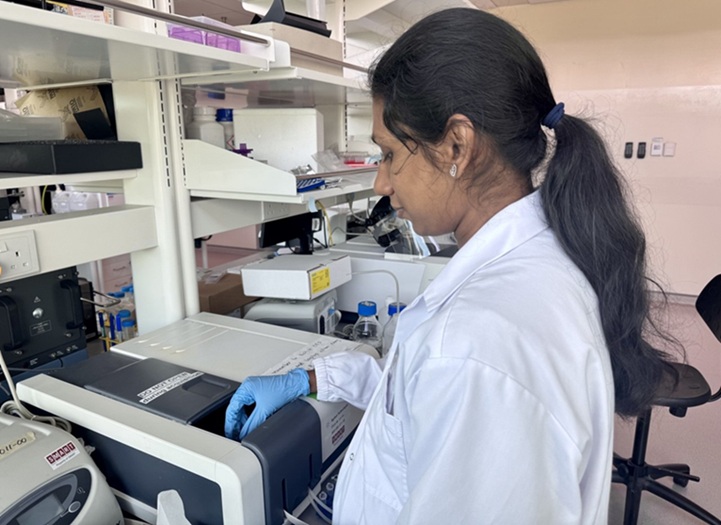
Novel UV and Machine Learning-Aided Method Detects Microbial Contamination in Cell Cultures
Cell therapy holds great potential in treating diseases such as cancers, inflammatory conditions, and chronic degenerative disorders by manipulating or replacing cells to restore function or combat disease.... Read more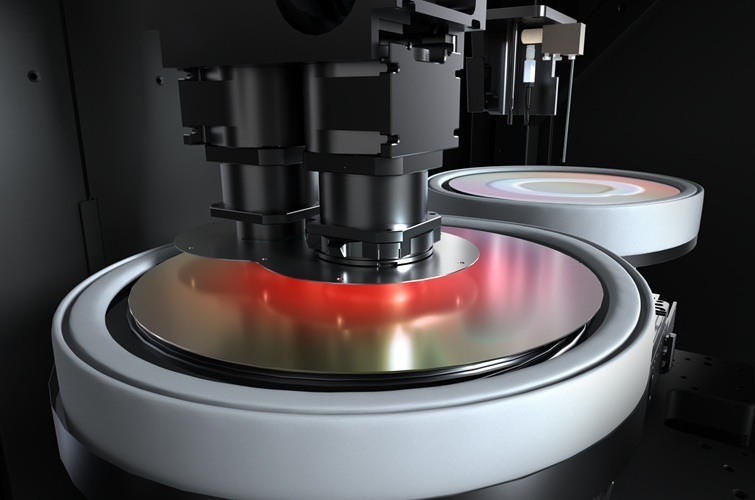
New Error-Corrected Method to Help Detect Cancer from Blood Samples Alone
"Liquid biopsy" technology, which relies on blood tests for early cancer detection and monitoring cancer burden in patients, has the potential to transform cancer care. However, detecting the mutational... Read more
"Metal Detector" Algorithm Hunts Down Vulnerable Tumors
Scientists have developed an algorithm capable of functioning as a "metal detector" to identify vulnerable tumors, marking a significant advancement in personalized cancer treatment. This breakthrough... Read more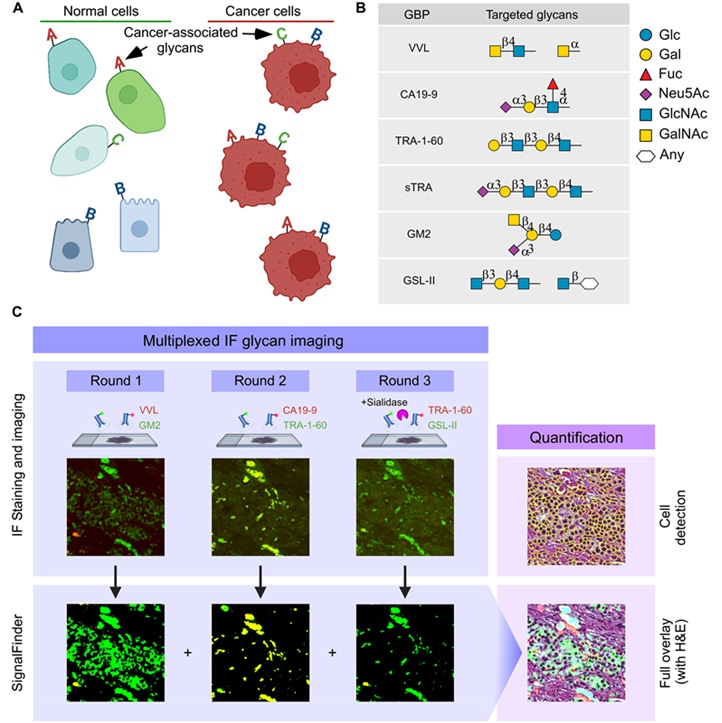
Novel Technique Uses ‘Sugar’ Signatures to Identify and Classify Pancreatic Cancer Cell Subtypes
Pancreatic cancer is often asymptomatic in its early stages, making it difficult to detect until it has progressed. Consequently, only 15% of pancreatic cancers are diagnosed early enough to allow for... Read moreTechnology
view channel
Disposable Microchip Technology Could Selectively Detect HIV in Whole Blood Samples
As of the end of 2023, approximately 40 million people globally were living with HIV, and around 630,000 individuals died from AIDS-related illnesses that same year. Despite a substantial decline in deaths... Read more
Pain-On-A-Chip Microfluidic Device Determines Types of Chronic Pain from Blood Samples
Chronic pain is a widespread condition that remains difficult to manage, and existing clinical methods for its treatment rely largely on self-reporting, which can be subjective and especially problematic... Read more
Innovative, Label-Free Ratiometric Fluorosensor Enables More Sensitive Viral RNA Detection
Viruses present a major global health risk, as demonstrated by recent pandemics, making early detection and identification essential for preventing new outbreaks. While traditional detection methods are... Read moreIndustry
view channel
Cepheid and Oxford Nanopore Technologies Partner on Advancing Automated Sequencing-Based Solutions
Cepheid (Sunnyvale, CA, USA), a leading molecular diagnostics company, and Oxford Nanopore Technologies (Oxford, UK), the company behind a new generation of sequencing-based molecular analysis technologies,... Read more
Grifols and Tecan’s IBL Collaborate on Advanced Biomarker Panels
Grifols (Barcelona, Spain), one of the world’s leading producers of plasma-derived medicines and innovative diagnostic solutions, is expanding its offer in clinical diagnostics through a strategic partnership... Read more




